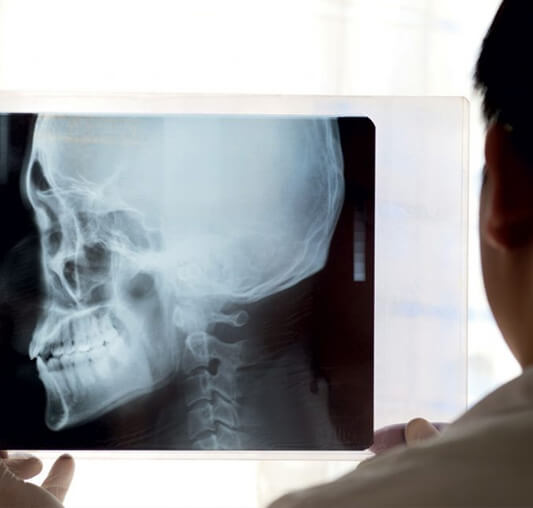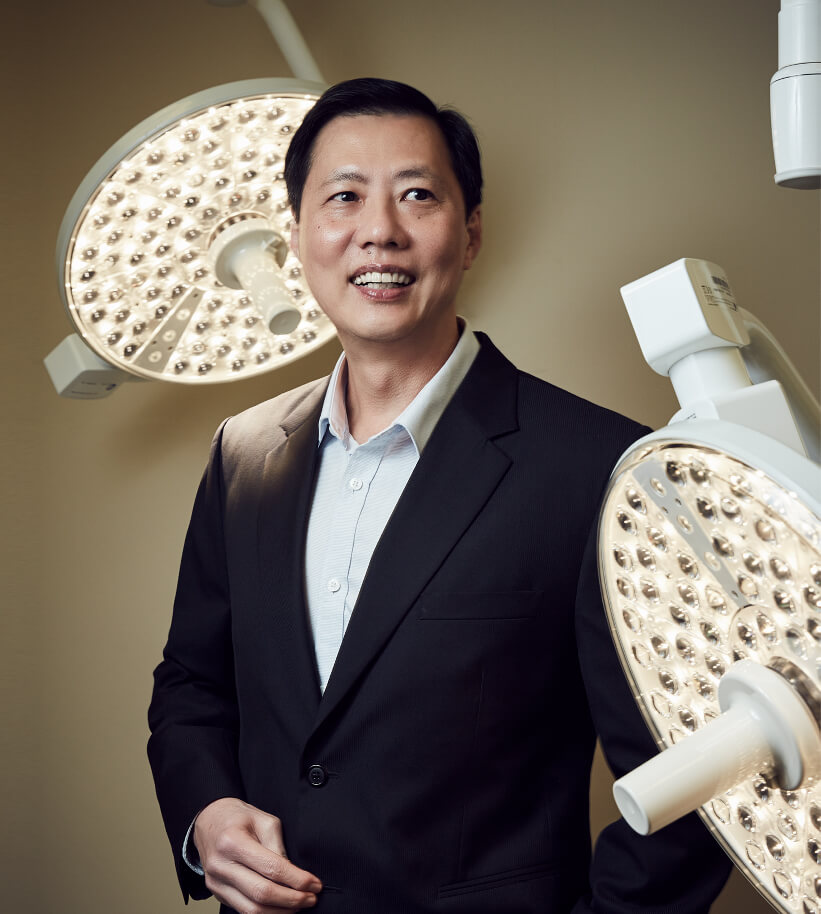
The first sign of salivary gland cancer can easily be mistaken. It often appears as an innocuous, typically painless lump that grows in the salivary gland area, which runs along the jawline. These lumps can be either benign (harmless) or malignant (able to spread and possibly fatal). Either way, I strongly recommend surgical removal of these salivary gland growths. Even if a lump in the salivary gland is not cancerous when it is diagnosed, the benign tumour will keep growing, and there is a chance it may turn malignant in the future.
Salivary gland growths most often occur in the parotid glands, the largest salivary glands that are located just in front of and below the ears.
The second most common area in which salivary gland tumours can occur is the submandibular glands, located just below the jawline. Tumours can also grow in the salivary glands under the floor of the mouth, below the sides of the tongue, as well as beneath the lining of the lips, tongue, in the roof of the month, inside the checks, nose, sinuses, and voice box — but these are rare.
While there is no specific cause of salivary gland tumours, smoking is associated with a benign parotid gland tumour commonly called Warthin’s tumour. This growth is a result of the proliferation of lymphoid tissue within the gland as a response to smoking. The causes of salivary gland cancers are unknown but risk factors include a family history of the same cancer, age and previous exposure to radiation.
To diagnose if a growth in the salivary gland is serious and warrants timely medical intervention, we do a procedure called a needle biopsy, where we use a needle to obtain a tissue sample of the lump. This procedure is commonly done in conjunction with ultrasound scan guidance. The cells are then tested in a laboratory to determine if they are cancerous.
Many patients ask me if their salivary gland growths can be treated with medication, but surgery is the only option to remove the growth. If the tests show that the growth is malignant, radiation therapy may have to be given as part of the follow-up treatment. This will help kill off any remaining cancerous cells. In most cases, recovery from the procedure will take a couple of weeks, and most patients are able to go back to work about two weeks after the surgery. For those requiring radiotherapy, their treatment will usually start about four to six weeks after surgery and may take about six weeks to complete.
As with many cancers, early detection is important as it is associated with a much better outcome and less risk of the cancer spreading. A fair number of patients come in for consultation only during the later stages of the cancer because they were unaware of the growth. Thus, it is important that you have a good awareness of your body, so that you can detect any unusual growths early and get them evaluated.

Senior Consultant Thyroid-Head & Neck Surgeon
MBBS (Singapore), FRCS (Edinburgh),
FRCS (Glasgow), FAMS (ORL)
Prof Goh is a Senior Consultant ENT specialist in Singapore with over 20 years’ experience, both locally and abroad in the UK and Canada under the Health Manpower Development Programme Award and the Singapore General Hospital (SGH) Scholarship.
A respected figure in his field, Prof Goh was the Head of the ENT Department at SGH and a founding member of the Asian Society of Head & Neck Oncology. Passionate about training up future ENT doctors, he teaches at the Duke-NUS Medical School and serves as Chairman on the Residency Advisory Committee at the Ministry of Health. A recipient of numerous service awards, Prof Goh’s dedication to his patients and the advancement of his field cannot be overstated.